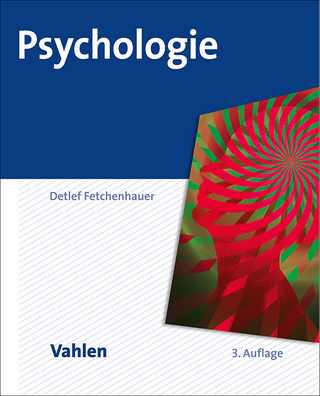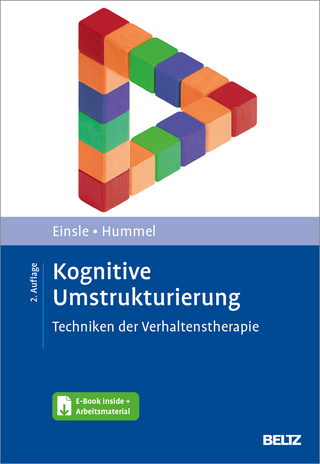
International Handbook of Language Acquisition
Routledge (Verlag)
978-1-032-91844-0 (ISBN)
The foremost experts in the field cover a variety of issues, from the underlying cognitive processes and role of language input to development of key language dimensions as well as both typical and atypical language development. Horst and Torkildsen balance a theoretical foundation with data acquired from applied settings to offer a truly comprehensive reference book with an international outlook.
The International Handbook of Language Acquisition is essential reading for graduate students and researchers in language acquisition across developmental psychology, developmental neuropsychology, linguistics, early childhood education, and communication disorders.
Jessica S. Horst is a Reader in Developmental Psychology at the University of Sussex. Janne von Koss Torkildsen is Professor in speech-language pathology at the University of Oslo.
Preface
SECTION 1: Foundations of Language Acquisition
Chapter 1: Research on first language acquisition: A brief history
Eve V. Clark, Stanford University, USA
Chapter 2: The neural bases of language acquisition
Angela Friederici, Max-Planck Institute for Human Cognitive and Brain Sciences, Germany
Jens Brauer, Max-Planck Institute for Human Cognitive and Brain Sciences, Germany
Chapter 3: The genetics of language acquisition
Hayley S. Mountford, Oxford Brookes University, UK
Dianne F. Newbury, Oxford Brookes University, UK
Chapter 4: Statistical learning approaches to studying language development
Ryan A. Cannistraci, University of Tennessee, USA
Rodrigo Dal Ben, Federal University of São Carlos, Brazil
Ferhat Karaman, University of Tennessee, USA
Sara Parvanezadeh Esfahani, University of Tennessee, USA
Jessica F. Hay, University of Tennessee, USA
Chapter 5: Computational and robotic models of early language development: A review
Pierre-Yves Oudeyer, Inria and Ensta ParisTech, France
George Kachergis, Stanford University, USA
William Schueller, Inria and University of Bordeaux, France
Chapter 6: Building the foundations of language: Mechanisms of curiosity-driven learning
Katherine E. Twomey, University of Manchester, UK
Gert Westermann, Lancaster University, UK
Chapter 7: Visual objects as they are encountered by young language learners
Hanako Yoshida, University of Houston, USA
Caitlin Fausey, University of Oregon, USA
Chapter 8: A role for sleep in understanding language acquisition
Rebecca Gómez, University of Arizona, USA
Katherine Esterline, University of Arizona, USA
SECTION 2: Dimensions of Language Learning
Chapter 9: Speech perception and discrimination: From sounds to words
Caroline Junge, Utrecht University, the Netherlands
Natalie Boll-Avetisyan, University of Potsdam, Germany
Titia Benders, Macquarie University, Australia
Chapter 10: Advances in early speech production: Interactions with maturation, perception and learning
Marilyn Vihman, University of York, UK
Chapter 11: Learning, recognizing and extending the meanings of words
Lynn K. Perry, University of Miami, USA
Jessica S. Horst, University of Sussex, UK
Chapter 12: Learning language from the use of gestures
Katharina J. Rohlfing, University of Paderborn, Germany
Chapter 13: Pragmatic development: Learning to use language to communicate
Ingrid Lossius Falkum, University of Oslo, Norway
Chapter 14: The role of input on syntax and morphology acquisition: Evidence from production
Amanda Owen Van Horne, University of Delaware, USA
Chapter 15: Learning language is learning typology: Acquisition of argument structure and relative clauses in typologically diverse languages
Deniz Özkan, Koç University, Turkey
Berna A. Uzundag, Koç University, Turkey
Aylin C. Küntay, Koç University, Turkey
Chapter 16: Language development in simultaneous bilinguals: The early years
Fred Genesee, McGill University, Canada
SECTION 3: Individual Differences in Language Development
Chapter 17: Individual differences in language acquisition
Courtenay Norbury, University College London, UK
Chapter 18: Developmental language disorder
J. Bruce Tomblin, University of Iowa, USA
Chapter 19: Speech sound disorders in children
Sharynne McLeod, Charles Stuart University, Australia
Sarah Masso, University of Sydney, Australia
Chapter 20: Language abilities and language growth in children with hearing loss
Teresa Y. C. Ching, National Acoustic Laboratories, Australia
Linda Cupples, Macquarie University, Australia
Vicky W. Zhang, National Acoustic Laboratories, Australia
Chapter 21: Language acquisition in children with autism spectrum disorder
Calum Hartley, Lancaster University, UK
SECTION 4: Language Development in Everyday Situations
Chapter 22: Young children’s word learning through overhearing: Next steps
Nameera Akhtar University of California, Santa Cruz, USA
Jackson Tolins University of California, Santa Cruz, USA
Jean E. Fox Tree University of California, Santa Cruz, USA
Chapter 23: Learning language in the context of play
Catherine S. Tamis-LeMonda, New York University, USA
Jacob Schatz, New York University, USA
Chapter 24: Learning language from books
Elaine Reese, University of Otago, New Zealand
Chapter 25: Using digital media to support language learning in early childhood
Gabrielle Strouse, University of South Dakota, USA
Chapter 26: The co-development of vocabulary and reading comprehension
Richard K. Wagner, Florida State University and Florida Center for Reading Research, USA
Jamie M. Quinn. Florida State University and Florida Center for Reading Research, USA
Chapter 27: The early steps in becoming a writer: Enabling participation in a literate world
Rui A. Alves. University of Porto, Portugal
Glossary
| Erscheinungsdatum | 16.10.2024 |
|---|---|
| Reihe/Serie | Routledge International Handbooks |
| Verlagsort | London |
| Sprache | englisch |
| Maße | 174 x 246 mm |
| Gewicht | 1084 g |
| Themenwelt | Geisteswissenschaften ► Psychologie ► Allgemeine Psychologie |
| Geisteswissenschaften ► Psychologie ► Verhaltenstherapie | |
| Geisteswissenschaften ► Sprach- / Literaturwissenschaft ► Sprachwissenschaft | |
| Medizin / Pharmazie ► Gesundheitsfachberufe ► Logopädie | |
| ISBN-10 | 1-032-91844-6 / 1032918446 |
| ISBN-13 | 978-1-032-91844-0 / 9781032918440 |
| Zustand | Neuware |
| Informationen gemäß Produktsicherheitsverordnung (GPSR) | |
| Haben Sie eine Frage zum Produkt? |
aus dem Bereich


